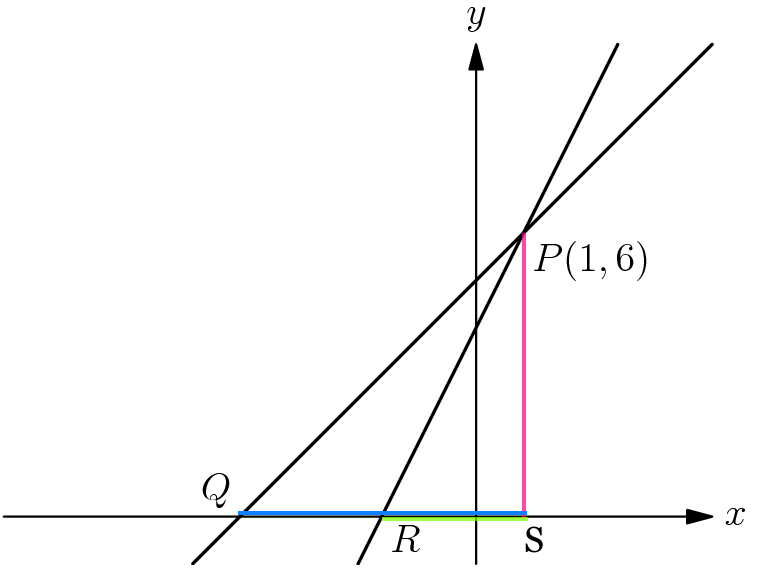
Let's draw a line straight down from P to the x-axis and call that point of intersection S.
Now notice that the area of △PQR is equal to the area of △PQS minus the area of △PRS
Now since P is 6 units above the x-axis,
PS = 6
From the picture we can see that PR has a steeper slope than PQ,
and so we can say the slope of PQ is 1 and the slope of PR is 3
Since PQ has a slope of 1,
rise / run = 1
PS / QS = 1
6 / QS = 1
6 = QS
QS = 6
Since PR has a slope of 3 ,
rise / run = 3
PS / RS = 3
6 / RS = 3
6 = 3 * RS
2 = RS
RS = 2
Now we can find the area of △PQS and the area of △PRS
area of △PQS = (1/2) * base * height = (1/2) * QS * PS = (1/2) * 6 * 6 = 18
area of △PRS = (1/2) * base * height = (1/2) * RS * PS = (1/2) * 2 * 6 = 6
And so...
area of △PQR = area of △PQS - area of △PRS = 18 - 6 = 12
(Note... all areas are in square units)
Alternatively...we can do
area of △PQR = (1/2) * base * height = (1/2) * QR * PS = (1/2) * 4 * 6 = 12